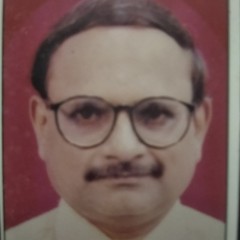As the world progressed with an industrial revolution a few centuries ago, the situation of the working class was deteriorating with no time limit of working hours and also with worst working conditions.
Workers, including women and even children, succumbed to the kind of slavery and an average worker lived for a very short time, dying too young!
Most of them did not have any proper spokesmen/representatives in the industrial houses to understand their minimum requirements, as human beings, and getting the grivances redressed.
To combat the inhuman attitude of industrialists of those centuries, the workmen had begun gradually succeeding in organising their unions, to demand fairness and as a result of that,
the Federation of Organised Trades and Labor unions (FOTLU) or AFL (American Federation of Labor), in their convention in Chicago, that occurred in 1884, declared,
“from May 1st, 1886 onwards, the official working hours would be limited to only 8 hours a day (in a shift)”.
Till then it was unlimited and the workers had to toil for a minimum 12 to 15 hours a day, without any extra benefits, and that even in very difficult working conditions, as mentioned above!
In the year 1885, then the epic labor organisation of the United States of America, the “Knights of Labor” supported the previous year’s AFL declaration of eight hours’ standard working time and began organising workers strikes etc and that culminated in a massive nationwide strike by about three lakh workers, in 1886!
Although the agitation was a peaceful one, till the day after, ie 2nd May, situation turned to clashes with policemen in Chicago, in which several workers were severely injured and also some succumbed too, on 3rd May, as an active one lakh workers were engaged in it.
On 4th May, the workers’ organisations planned a massive rally at Haymarket Square to protest against the killing of their fellow men by the police.
Meanwhile, as the police was trying to make way for an official, someone threw a bomb in the crowd and 15 people were killed, including eight striking workers!
After that the nation was tense with the riot incident, for a long time!
As the indefinitely prolonged riot trial was over and the court verdict came,
seven innocent workers were sentenced to death by hanging, without any proof of crime against them;
and also several workers were given many years’ imprisonment!
On 1st May 1890, about three lakh people assembled in London as a call was given by the European Socialist and Labor Parties’ front to observe “Haymarket Martyers Day” on account of the killing of innocent workers in the United States.
And ever since that, 1st May was declared as an International Labor Day.
On this day we remember one of our trade union veterans, the late Dr Datta Samant:
The biginning of the Samant era:
Born in 1932, Dr Dattatray Narayan Samant, a medical practitioner, opened a clinic for poor workers at Chandivali, then a hillock quarry, out of compassion.
He was often described as India’s own Lech Walesa;
a ‘Solidarity’ Trade Union Leader of Poland with massive following of workers, like Dr. Datta Samant.
Dr Samant’s passion of compassion towards the poorest strata of unorganised workers, as said above, grew to even sidelining his original profession as a medical practitioner hence he became a mainstream organiser of workers in the 1970s.
He spheareheaded the textile workers’ agitations for better wages and as a result of every strike, untill the second last one, they kept gaining more and more benefits and Dr Samant became their real-life hero.
In the beginning he was a Congress follower.
Later, as once he was denied ticket for Lok Sabha election, Dr Samant floated his own outfit called the “Kamgar Aghadi” and also faught the election in 1972, that won him a landslide victory!
Dr Samant used to be fondly called as “Doctor Saab” by tens of thousands of his union members.
Unfortunately,
he was assassinated in 1997.
Long live the legend.
About The Author
No related posts.





